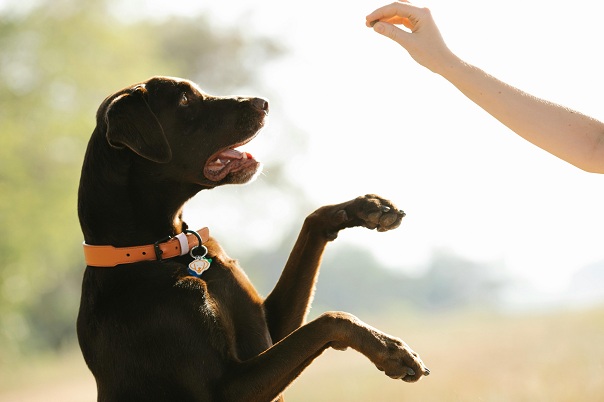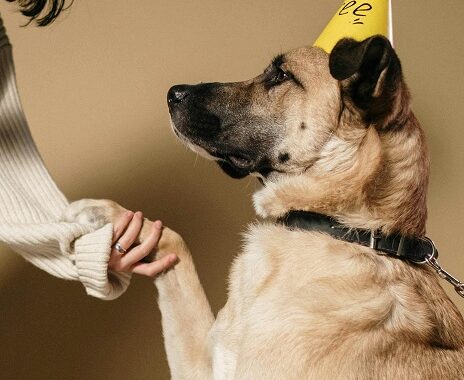Pet training is one of the most rewarding aspects of pet ownership. Whether you have a playful puppy, a senior dog, or a curious cat, proper training creates a stronger bond between you and your furry friend. This complete pet training and behavior guide will help you understand the basics of pet behavior and provide practical solutions for common challenges.
Good training makes life easier for both you and your pet. It creates clear communication, reduces stress, and helps prevent behavioral problems before they start. From basic commands to advanced techniques, we’ll cover everything you need to know about successful pet training.
Why Pet Training Matters
Training isn’t just about teaching tricks. It’s about creating a safe, happy environment where your pet can thrive. Well-trained pets are more confident, less anxious, and better able to adapt to new situations.
Training also strengthens the bond between you and your pet. When you work together consistently, you build trust and understanding. This makes everyday activities more enjoyable and helps prevent common behavioral issues.
Understanding Pet Behavior Basics
Before you start any training program, it’s important to understand how pets learn. Most animals respond well to positive reinforcement, which means rewarding good behavior rather than punishing bad behavior.
Pets learn through repetition and consistency. They need clear signals about what you expect from them. When you’re consistent with your commands and rewards, your pet will learn faster and remember better.
Every pet is different. Some learn quickly, while others need more time and patience. The key is to work at your pet’s pace and celebrate small victories along the way.
Getting Started with Basic Training

Start with simple commands that are useful in everyday life. For dogs, this might include “sit,” “stay,” and “come.” For cats, you might focus on using a scratching post or coming when called.
Keep training sessions short and fun. Most pets do best with 5-10 minute sessions, repeated several times throughout the day. End each session on a positive note with a reward your pet enjoys.
Choose rewards that motivate your specific pet. Some animals love treats, while others prefer praise, play time, or physical affection. Experiment to find what works best for your furry friend.
Cat Training: Beyond the Litter Box
Many people think cats can’t be trained, but that’s not true at all. Cats are intelligent animals that can learn many behaviors when approached correctly.
One of the most useful training techniques for cats is crate training. Is It OK To Crate Your Cat At Night? This method can help with travel, vet visits, and creating a safe space for your cat.
The Secret To Successful Cat Crate Training Schedule involves patience and gradual introduction. Start by making the crate a positive space with comfortable bedding and treats.
Working cat parents often wonder Can You Crate A Cat While At Work. While it’s possible in some situations, it’s important to understand your cat’s needs and limitations.
Unlocking the Benefits of crate training cats goes beyond convenience. It can reduce stress during travel and provide a secure retreat when your cat feels overwhelmed.
For those new to this concept, Unraveling the Mysteries of Crate Training for Cats provides step-by-step guidance for success.
Training Senior Dogs: Special Considerations
Older dogs have unique training needs that require patience and understanding. Effective Training Techniques for Senior Dogs focuses on methods that work well for aging pets.
Senior dogs may have physical limitations that affect their ability to perform certain behaviors. Joint pain, hearing loss, or vision changes can all impact training success. Always consider your dog’s health when setting training goals.
The good news is that senior dogs often have longer attention spans than puppies. They’ve also learned to trust their human companions, which can make training easier in some ways.
Addressing Common Behavior Problems
Many pet behavior issues stem from boredom, anxiety, or lack of clear boundaries. Regular exercise, mental stimulation, and consistent routines can prevent many problems before they start.
If your pet shows signs of aggression, excessive barking, or destructive behavior, it’s important to address these issues quickly. Sometimes these behaviors indicate underlying health problems that need veterinary attention.
Professional help is available when you need it. Animal behaviorists and certified trainers can provide specialized guidance for challenging situations.
The Role of Exercise in Behavior Management
Physical activity plays a huge role in pet behavior. Tired pets are generally better behaved pets. Easy Exercises for Dogs can help you find activities that work for your lifestyle.
Even simple activities can make a big difference. A daily walk, play session, or interactive toy can help reduce excess energy that might otherwise lead to problem behaviors.
Creating a Training Schedule That Works
Consistency is key to successful pet training. Set aside specific times each day for training activities. This helps your pet know what to expect and makes learning easier.
Morning training sessions often work well because pets are alert and ready to learn. However, choose times that work with your schedule so you can be consistent.
Track your pet’s progress in a simple notebook or phone app. This helps you see improvement over time and adjust your approach when needed.
Positive Reinforcement Techniques
Reward-based training is the most effective and humane approach for most pets. When your pet does something you like, immediately reward them with treats, praise, or play.
Timing is crucial with positive reinforcement. The reward should come within seconds of the desired behavior so your pet makes the connection.
Be generous with praise and rewards during the learning phase. Once your pet understands what you want, you can gradually reduce the frequency of treats while maintaining verbal praise.
Tools and Equipment for Training Success
You don’t need expensive equipment to train your pet successfully. Basic items like treats, a collar and leash, and some toys are usually sufficient to get started.
Choose high-value treats that your pet finds irresistible. Small, soft treats work best because they can be eaten quickly without interrupting the training flow.
Interactive toys and puzzle feeders can provide mental stimulation that supports your training efforts. These tools help prevent boredom and give your pet appropriate outlets for their energy.
When to Seek Professional Help
Some situations require expert guidance. If your pet shows aggressive behavior, severe anxiety, or problems that don’t improve with basic training, consider consulting a professional.
Look for certified trainers or animal behaviorists who use positive reinforcement methods. Ask about their experience with your specific type of pet and problem.
Professional training classes can also be valuable for socialization and learning in a structured environment. Many pet owners find group classes helpful for both training and community building.
Building Long-Term Success
Pet training is an ongoing process that continues throughout your pet’s life. Regular practice and reinforcement help maintain good behaviors and prevent backsliding.
Stay patient and positive throughout the training process. Every pet learns at their own pace, and setbacks are normal parts of the journey.
Remember that training should be enjoyable for both you and your pet. If sessions become stressful or frustrating, take a break and try again later with a fresh approach.
Conclusion
Successful pet training builds stronger relationships and creates happier homes for everyone involved. Whether you’re working with a young puppy, an adult cat, or a senior dog, the principles of patience, consistency, and positive reinforcement will guide you toward success.
Start with simple goals and gradually build complexity as your pet masters each skill. Remember that every small step forward is progress worth celebrating.
With dedication and the right approach, you can help your pet become a well-behaved, confident companion who enriches your life for years to come. The investment in training pays dividends in the form of a deeper bond and a more harmonious household.
Further Reading:
How to Train Your Dog & Top Training Tips
FAQ:
1. Why is pet training important?
Pet training is essential for building a stronger bond between you and your pet, reducing stress, and preventing behavioral problems. Well-trained pets are more confident, adaptable, and easier to manage in everyday life.
2. What is the best way to start pet training?
Begin with simple commands or behaviors, such as sit, stay, or come for dogs, and basic habits like using a scratching post for cats. Keep sessions short, fun, and reward-based to encourage learning.
3. Can cats really be trained?
Yes, cats can be trained with patience and positive reinforcement. Crate training, litter box use, and recall are all possible when introduced gradually with rewards and consistency.
4. What special considerations are needed for training senior dogs?
Senior dogs may have health limitations such as joint pain, hearing loss, or vision changes. Training should be adapted to their abilities, focusing on gentle, rewarding techniques that respect their comfort levels.
5. How can I address common pet behavior problems?
Most behavior issues stem from boredom, anxiety, or lack of boundaries. Providing regular exercise, mental stimulation, and consistent routines can prevent problems. For aggression or severe issues, professional help may be needed.
6. What role does exercise play in pet behavior?
Exercise is crucial in managing behavior. Active pets are less likely to develop destructive habits. Daily walks, playtime, and interactive toys help reduce stress and excess energy.
7. What training tools and equipment do I need?
Basic tools like treats, a collar and leash, and interactive toys are usually enough. High-value treats and puzzle feeders can provide motivation and mental stimulation during training sessions.
8. When should I seek professional help for training?
If your pet shows aggression, severe anxiety, or behaviors that don’t improve with basic training, it’s best to consult a certified trainer or animal behaviorist who uses positive reinforcement methods.
9. What is the key to long-term training success?
Consistency, patience, and positive reinforcement are key. Training should be ongoing throughout your pet’s life, with regular practice and reinforcement to maintain good behaviors.
